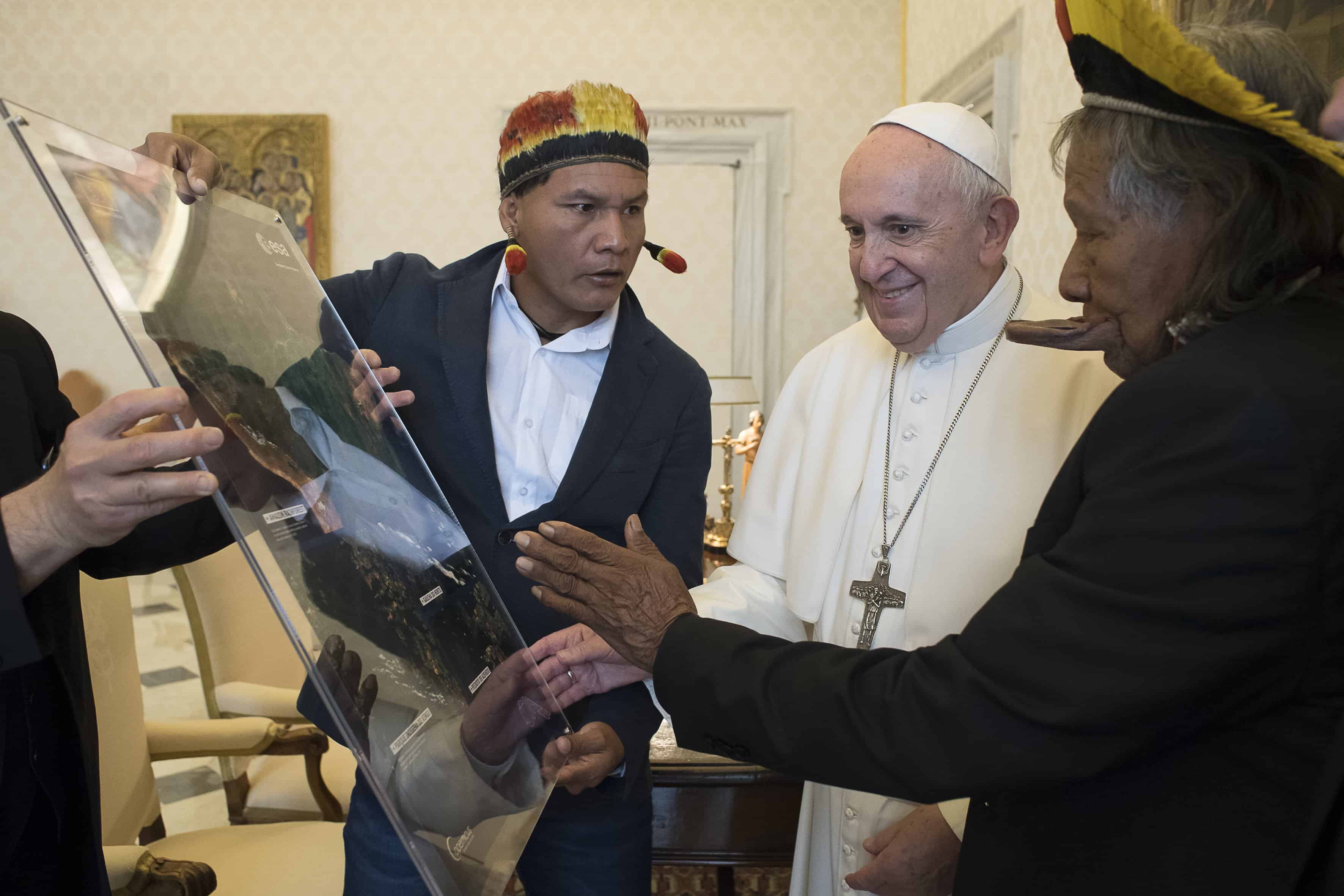On June 17 the working document for the Pan-Amazonian Synod, to take place later this year in Rome, was released. And it’s been causing waves. The main question asked is one that has potential to affect the whole Church — would they really ordain married men? And what does that mean outside the Amazon?
The question is important and it will be widely discussed in the coming months. But I want to recall another time that question was asked in South America — and why.
The Controversy of Married Clergy
The Pan-Amazonian Synod has been controversial ever since its proposals came to light. With the release of the preparatory document we finally have details on over a dozen concrete proposals, an uncharacteristic specificity for this type of working document. But even with new details on the full program of the synod, one topic above all others — the possibility of married clergy — is in the news.
Comments in February from Jesuit priest Francisco Taborda caused the first big stir. The Brazilian theologian, speaking in an interview with Crux, confirmed that married priests would be on the agenda, “so that every community … can have the Sunday Eucharist.”
He noted that with the shortage of priests, many communities have to reserve the Blessed Sacrament for weeks or months at a time to have regular access, a near-impossible feat with wheat hosts in the humidity of the region.
Taborda’s remarks on substituting a more resilient flour in Eucharistic hosts caused enough ruckus for the Vatican to issue a response, but without any reference to married clergy.
When the Instrumentum Laboris (working document) was released, the media coverage had eyes only for the possibility of married clergy. The New York Times’ headline was zealous if not misleading: “Vatican Opens Door to Limited Ordination of Married Men as Priests.”
As Jesuit theologian Víctor Codina sees it, this is one of the serious risks in even putting married clergy on the table: that the media will only cover the controversy. But the synod’s full name points to ecology as the key issue (as I hope to explain in another article). It’s an important issue in Francis’ pontificate, as best expressed in his encyclical Laudato Si’. And it is impossible to understand the Amazonian Church — its poverty, its stance toward the rest of the world, the demands on its clergy — without comprehending the relationship between indigenous peoples and the land.
If the Pan-Amazonian Synod is controversial, I would contend it is because we lack the context — where does these proposals come from?. Oddly enough, there is precedent for this: the same crisis and the same response.
Ordaining viri probati, trusted men in stable families, may seem like a radical solution, but it can hardly be understood except as a seemingly proportional response to a real crisis. The Church has been thinking the same thoughts for several generations, and unless we see that pattern, we might mistake recent proposals for feverish radicalism instead of serious but urgent pleas.
Another Time, Another Place
In many parts of the world, the Catholic Church suffers from a clergy shortage. But not like in the Amazon. Some 70% of communities do not have a priest to celebrate the Eucharist on Sundays. The Diocese of Alto Solimões, at the border where Brasil, Colombia and Peru meet, has only 15 priests to serve over 120,000 Catholics. And some indigenous communities have gone as long as 10 years without even seeing a priest.
Though the Amazonian region is now at the forefront, in the late 1960s and early 1970s the great challenge for the Church’s work among indigenous peoples in South America was among the Quechua- and Aymara-speaking peoples of the Andes.
As Jeff Klaiber, SJ writes in his magisterial history of the Church in Peru, a crisis of native vocations dates to the 19th century. 1 In the colonial period, South America could import Spaniards to supplement what was lacking, but independence ended that. From the 1940s to the 1970s, Peru and Bolivia (among other countries) welcomed foreign missionaries from North America and Europe, where the vocation boom of the post-war era seemed to be the perfect solution for the local clergy shortage.
But even with the influx of gringos, the demographic explosion of the 20th century made it impossible to keep up. The missionary impulse was more of a band-aid than a long-term solution.
In 1968, Bolivia had a population of about 4,000,000 people, but just 899 Catholic priests. Of them, 701, about 78%, were foreigners, and 690 were not even from Latin America. 2 And in Peru, as of 1973 there were 2,459 priests to serve a Peruvian population of 13,000,000; of them, 61% was foreign-born. 3
Naturally, the long-term response was to promote native clergy. But there was a huge problem to ordaining native clergy in the Andes: there weren’t any to ordain.
In Andean culture, “only one who is married is considered a mature person,” as one Bolivian bishops’ conference document put it. 4 Though Andean highlanders have been Catholic for centuries, the celibate priesthood was never a viable path for most of them. They never abandoned their culture’s emphasis on family life as the basis for community.
The real-life consequences of this were shocking for North American missionaries. The non-native clergy worked for decades to foment native vocations with little to show for it. The Maryknoll fathers opened a seminary near the Peru-Bolivia border, but with over 800 seminarians over 24 years, they only managed to produce 14 indigenous priests. 5
As journalist Penny Lernoux puts it, “Aymara boys who entered the seminaries were viewed as strangers who had left for another culture.” And that meant they would be considered outsiders or sell-outs upon return, and certainly not full members in their communities. They had to take on a foreign language, a foreign culture and even a foreign Catholicism to become priests, an impossible task for most.
So bishops and clergy asked Paul VI to consider allowing a married clergy to overcome the cultural impediment. Supposedly the pope who oversaw the implementation of Vatican II was not closed to the idea, but his advisors were less thrilled with what they disparagingly referred to as “married peasant priests.” 6
Without a married clergy option, the Latin American Church in the Andes and elsewhere devised elaborate systems of catechists and married, native deacons to help keep the Word of God in local communities. They already spoke the native language and could develop cross-cultural skills faster than missionaries.
The latter proposal for deacons sank in Bolivia after several years for various reasons, among them Aymara understandings about how authority should rotate through the community that probably would have impeded a married, native priesthood as well.
While catechists are still a critical part of the Church apparatus in the Andes as the have been since the 16th century, they cannot confect the Eucharist. And as the synod proposals indicate, the inaccessibility of the Eucharist is a key problem at hand.
Though the Vatican seems more open to the proposal today than fifty years ago, ordaining viri probati provokes the same anxieties now as it did then. Some worry that the candidates for ordination, men from rural areas who are probably without access to higher education, would be dangerously undereducated. Others claim that a regional exception to clerical celibacy would function as a “point of no return,” allowing the change for other regions if not the universal Church. 7
Frankly, we don’t know how these tensions would be resolved in real life. They can hardly be ignored, regardless of who is making the critiques. But neither should they be an absolute deterrent. However, only the Amazonian Church, with Francis’s blessing, can attempt a solution, married clergy or no.
It seems to me that it’s not so much an issue of a watertight proposal in theory, as a perseverance and charity in praxis. The question, then, must be, can we think with the Church? Can we accept the insistent movements of the Spirit within it rather than dwell on frustration and details?
Can We Think With the Church?
The post-conciliar experience in the Andes is not identical to the contemporary situation in the Amazon, but the deep historical resonance should give us pause.
The failure to resolve this dilemma means that many Catholics could continue to go without the Eucharist, a serious but not exclusive concern. Further, the divisions in the Church that show themselves in polarized reactions to the synod proposals might only deepen in the course of the global conversation on the topic.
It is a challenge to think with the Church when the Church herself is contemplating whether she would really make such a drastic change. There is something to be said for accepting the real attractiveness of this solution despite its problems. However, I believe that the integral ecology that is supposed to be the center of new evangelization efforts in the Amazon region overcomes this yes-no decision before us.
Next week, I will dig into the ecological crisis of the Amazon and its implications for the Church. Instead of asking what married clergy means, the coming synod asks: what does it mean to have a pastoral conversion so that the Church might fully preach the Gospel of Jesus Christ in the Amazon? (Instrumentum Laboris 5)
- Jeffrey Klaiber, SJ, The Catholic Church in Peru, 1821-1985: A Social History (Washington, D.C.: The Catholic University of America Press, 1992), 38. ↩
- Andrew Orta, Catechizing Culture: Missionaries, Aymara, and the “New Evangelization” (New York: Columbia University Press, 2004), 80. ↩
- Jeffrey Klaiber, SJ, “La escasez de sacerdotes en el Perú: una interpretación histórica”, Histórica 5:1 (1981): 1. ↩
- Orta, Catechizing Culture, 92. ↩
- Penny Lernoux, Cry of the People: The Struggle for Human Rights in Latin America—The Catholic Church in Conflict with U.S. Policy (New York: Penguin, 1982), 387. ↩
- Lernoux, Cry of the People, 415. ↩
- Orta, Catechizing Culture, 96. ↩


